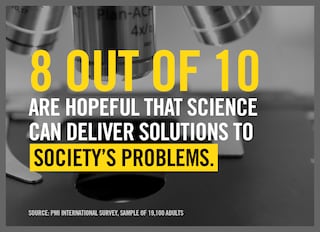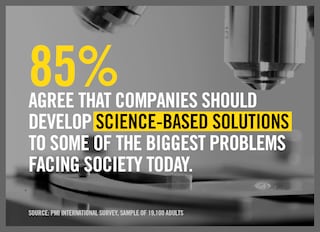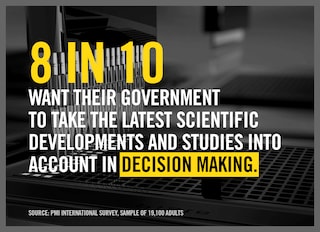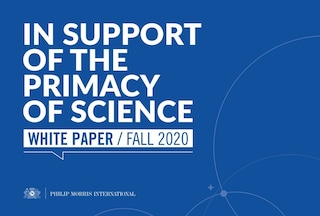Science talks. Are policymakers listening?
People want governments and public authorities to prioritize science and fact over ideology, politics, and unsubstantiated beliefs. This is one of the conclusions of PMI’s latest white paper, “In Support of the Primacy of Science,” the results of which are based on an international survey commissioned by PMI.
One positive finding was that 77 percent of people believe that scientific advancements can provide solutions to the biggest problems facing society. Following on from that, 84 percent say governments should consider the latest scientific information when making policies. Yet the same survey found that only 51 percent of adults surveyed think their government is doing a good job in ensuring science informs its decision-making process.
When science is not used to its full potential, and when regulators do not have access to accurate and non-misleading scientific information, there is the risk of a void developing. This allows fake science, false information, ideology, and politics to take precedence over facts and evidence. Is this really the best environment in which to create policies?
Science should be at the heart of public policy
People want decision-making to be led by science
The international survey shows that science has never played a more important role in people’s daily lives than it does today. And when it comes to public policy decisions, the findings suggest that the vast majority of adults (84 percent in the survey) want their government to take the latest scientific evidence into account when making policy decisions.
PMI hopes the white paper will spark a broader conversation about the role of science, the importance of science-based decisions, and the opportunities for progress presented by science.
The modern world is underpinned—and made possible—by science. And thanks to the advances in science and technology, smoke-free alternatives that are a better choice than continued smoking are now a reality. The survey’s findings suggest that the vast majority of the public believe that the regulation of these products should be based on scientific evidence. This approach will enable adult smokers who would otherwise continue smoking to access better alternatives to cigarettes.
Smoke explained: The problem with burning
It’s well known that cigarette smoking is harmful and can lead to smoking-related diseases. What’s not so well known is that the main problem is the smoke itself. When a cigarette is lit, it burns away the tobacco and paper of a cigarette, and creates smoke that contains flavors from the tobacco blend, as well as nicotine that exists naturally in tobacco leaves. This burning process also produces approximately 6,000 chemicals, many of which have been identified by public health authorities to be harmful or potentially harmful. It is the high levels of these harmful chemicals in the smoke of a burning cigarette that is the primary cause of smoking-related diseases.
Smoke-free products do not burn tobacco, since they do not reach the high temperatures needed to combust material and produce smoke. Instead, they deliver nicotine (usually via an aerosol) that whilst not risk-free and addictive, should significantly lower the average levels of harmful chemicals compared to cigarettes. Whether a product reduces emissions of harmful chemicals, compared to cigarette smoke, has to be scientifically assessed for each product.
What is nicotine?
Nicotine occurs naturally in tobacco. It’s one of the reasons why people smoke, along with ritual and taste. In order for smokers to switch from cigarettes to smoke-free alternatives completely, these products generally need to contain nicotine. Nicotine is not the primary cause of smoking-related diseases. However, nicotine is addictive and is not risk-free.
Scientifically validated alternatives
Scientifically substantiated, smoke-free alternatives can be a better choice than continued smoking. But in many countries, adult smokers don’t know about these alternatives and/or cannot access them. Many laws regulating tobacco products were developed before these alternatives existed. Consequently, the laws don’t distinguish clearly between cigarettes and smoke-free alternatives, even though they are fundamentally different. There is a potential public health benefit if large numbers of adult smokers – who would otherwise continue to smoke – change completely to smoke-free alternatives. Giving them access to, and accurate information about, these products and how they compare to continued cigarette smoking is critical.
Global tobacco policy is at a crossroads: it can remain on the well-worn path of “quit or continue”, where even the WHO acknowledges the number of smokers in 2025 will be roughly the same as today. Or it can implement innovative and robust policies to complement existing measures designed to discourage initiation and encourage cessation. The recognition of the role smoke-free alternatives can play, will hugely accelerate the overall decline in smoking prevalence worldwide.
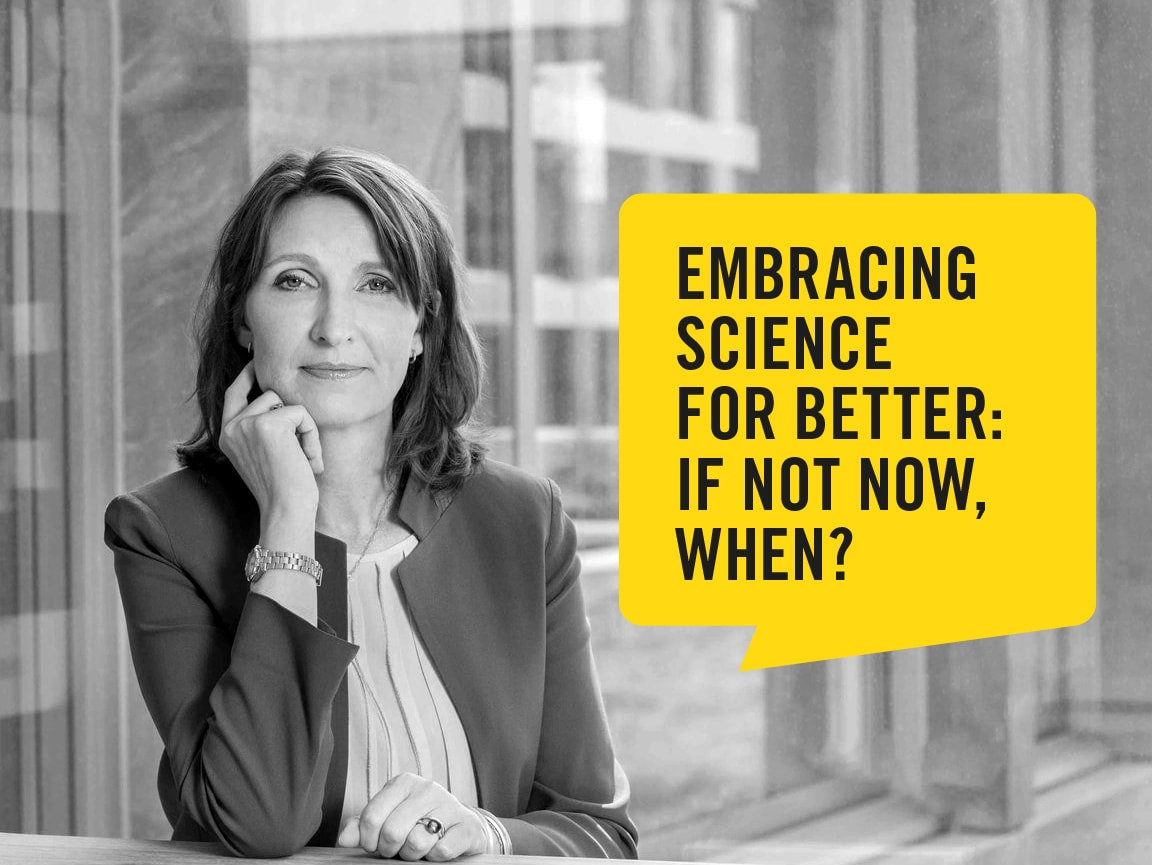
Embracing science for “better”
Science should be front and center in policymaking, in business, and in everyday life, as it can enable significant strides in our collective efforts to address the world’s most pressing problems. But society has yet to embrace its fullest potential.
Dr. Moira Gilchrist, Vice President of Strategic and Scientific Communications* at PMI, recently asked what might be holding us back.

